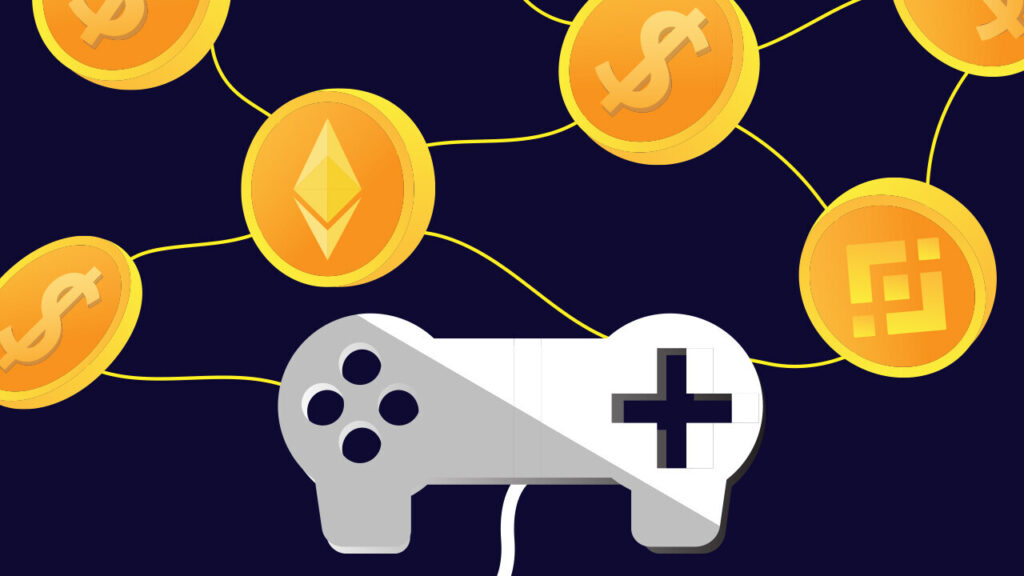The gaming industry is renowned for being one of the most dynamic in the world. Since its primitive beginnings, to where gaming stands today, the leaps in technology have been truly groundbreaking. There isn’t much that most avid gamers haven’t seen before in 2025. While graphics, consoles, and titles do keep improving and getting better, one of the biggest innovations of the last decade has been the introduction of crypto gaming. Combining the fun of gaming with opportunities for players to earn real rewards just for playing has been a literal game-changer. Here’s a look at how and why this is.
What Players Want From Crypto Games

New crypto gaming players are coming up all the time. The ongoing popularity of crypto and crypto gaming has coalesced in recent years to create a vibrant and dynamic community of new-age gamers. With most always on the lookout for the best crypto games, those who have experience know exactly what to look for.
The most successful games offer lasting appeal that extends beyond their initial novelty. They are also built on verifiable blockchains and seek to offer real value to both players and the companies behind them. Smooth gameplay, real rewards that are worthwhile, and strong communities are all aspects that make the best games popular among players.
Gameplay always has to come first. If a game feels clunky or one-dimensional, players won’t stick around. The best titles find a balance between rewards and immersion. Players look for fair mechanics, decent graphics, and active developers. A good crypto game lets you earn without feeling like a chore.
Earning potential is another big draw. Crypto gaming lets players earn tokens or items with real-world value. These can be traded, sold, or used elsewhere. This gives a sense of ownership that regular games rarely offer.
Breaking the Borders of Traditional Play
One of the strongest parts of blockchain gaming is how it removes geographic limits. In the past, players often had to deal with region locks, currency blocks, and limited payment methods. Crypto gets around that. If you’ve got a wallet and an internet connection, you can jump into a game from nearly anywhere.
This change has opened up communities in new ways. Players from different countries meet and team up without worrying about fees, wait times, or exchange rates. It feels more open and direct. Smart contracts take care of trades and bets. Digital ownership doesn’t rely on any one country’s rules or platforms. You control your assets, not the game publisher.
This openness has also changed how games are made. Indie developers from places with smaller gaming industries now launch blockchain projects that reach global players. Crowdfunding through tokens replaces traditional investors. Marketing happens in Discord and on Twitter, making the process faster, more democratized, and more direct.
The Rise of Player-Owned Economies
Ownership is one of the biggest changes crypto brings to gaming. When players buy skins or weapons in regular games, they don’t truly own them. They can’t sell them, transfer them, or use them outside that one title. Blockchain changes that. Now, a weapon, skin, or item can be stored in your own wallet, not locked inside the game.
This turns games into small economies. Players trade items on public marketplaces. Prices will always change with demand. Some gamers become full-time traders, while others focus on collecting rare items to show off.
Earnings in games also have a wider impact. In some regions, players rely on crypto games as a side hustle. While not everyone makes a living, the idea of earning while playing has gone from a wild idea to a working model. Tournaments, NFTs, and limited drops all feed into this loop. As long as the gameplay holds up, players are happy to spend time in these worlds.
How Blockchain Is Changing Game Development
Behind the scenes, blockchain changes more than player habits. It’s also changing how games are built. Smart contracts handle transactions and rules. That means less need for trust in centralized systems. If a tournament pays out in crypto through code, there’s no human middleman.
Games are also getting smaller in file size, with more of the action and ownership handled off-chain. Developers use blockchain only for key features, while keeping gameplay on regular servers. This hybrid setup keeps things fast and cheap for players while still giving the benefits of decentralization.
Some projects are going all-in and are building full games on chain, or making use of player-run servers that share power and control. These ideas are still new, but they reflect a growing desire for more transparent gaming.
From Single Games to Entire Gaming Worlds

The next step in blockchain gaming is already underway. Interconnected games are starting to appear. These don’t live in isolation. A sword earned in one game might be used in another. A character built on one platform could visit another world. This creates a web of games linked by shared code, tokens, and items.
It’s the start of what some call the “open metaverse.” Rather than being owned by one company, this space is shaped by players and developers working together. Communities form around games, but they also move between them.
These connections bring new challenges. Balance, fairness, and quality control all become harder. Still, the excitement is real. Players like the idea that their time and progress won’t be wasted if they switch games. Developers like being part of something bigger, with shared tools and audiences. It feels like a fresh start.
Final Thoughts
Crypto gaming isn’t a trend that fades with the next console cycle. It’s reshaping how people connect, compete, and earn inside digital worlds. From wallet-based logins to token-driven economies, the basics of play are being rewritten. Players now expect more control, better access, and real rewards for their time.

